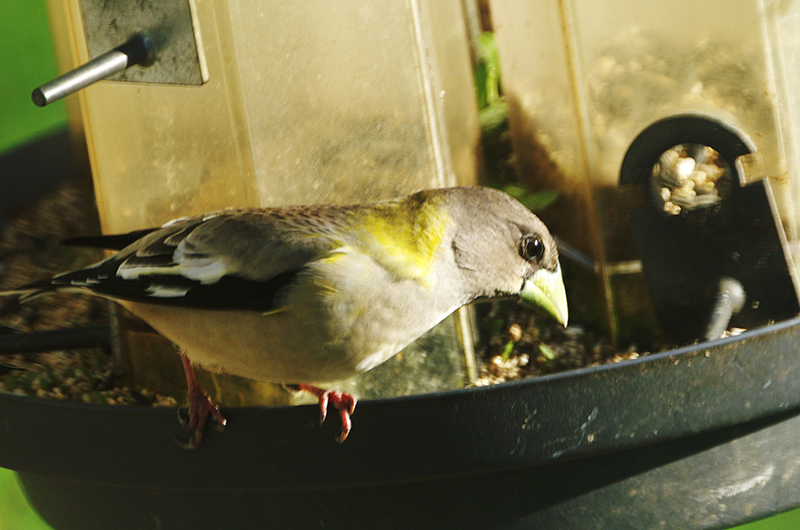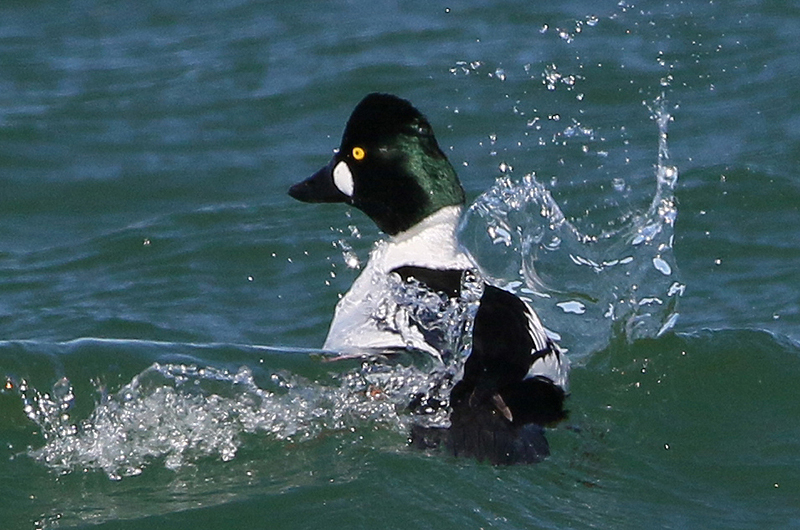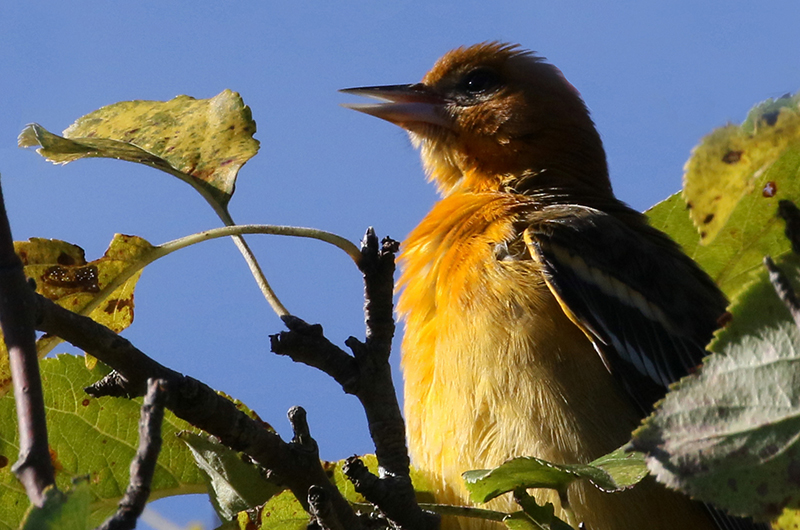While many of us are thinking Thanksgiving season–it is hard to believe that this year’s celebration is already past – the birders in us are thinking this is the season for western strays. Not strays as in stray cats, but strays that are supposed to be in the American southwest or on the west coast at this time of the year. Weather patterns have recently provided winds that could easily bring such stray birds to us; to quote someone, “Birds have wings and they use them!”
Albert Fischer spotted a scissor-tailed flycatcher on the edge of a field near Squibnocket on Nov. 14. This species only rarely comes to the Vineyard, as Vineyard Birds 2 considers them to be a rare vagrant, with the last sighting 20 years ago in 1998. I do not recall any sightings this century. The curious thing about this bird is that it is lacking the namesake scissor-like long tail feathers but its dark wings, light gray head and back, and buffy orange flanks are more than enough to identify this species. Too bad we could not ask it how it lost its long tail feathers; had this bird molted them, or is there some other more intriguing reason? Unfortunately, Mr. Fischer is the only one to report this species; thank goodness for his photograph!
Bird Sightings
Catherine Deese had a flock of evening grosbeaks visit her feeder on Nov. 17. We do not get this species very often and, from my memory, it has been at least several years since the last report. According to Susan Whiting’s and Barbara Pesch’s Vineyard Birds 2, they used to be regularly found in small numbers most winters, but no longer. When you see one of these birds you will realize why they are called grosbeaks; their bill is unusually heavy and strong, all the better for cracking open hard seeds. There were also common grackles in the photo she sent, and she reports a female Baltimore oriole visited her feeder that same morning. Dan Bradley also had a first-year Baltimore oriole at his feeder on Nov. 12.
Margaret Curtin and Luanne Johnson birded the Head of the Lagoon on Nov. 18 and their highlights include four common goldeneyes on the Lagoon side of the causeway. Later that day, Sharon Simonin found two goldeneyes along the seawall in Vineyard Haven. These are the first reports of goldeneye for the fall/winter season but more will be coming and the species stays through the winter. They also spotted a male pintail within a flock of American wigeon on the freshwater side of the causeway.
A flock of snow buntings was observed by John Nelson in a puddle-filled parking lot at the right fork of South Beach on Nov. 17, another first for the season. They were actively bathing in the shallow parts of the puddles. They had moved on by the time I got there later that afternoon; they frequent the dunes and outer beaches and so they had moved to somewhere else along the south shore. Mr. Nelson also spotted the American wigeons and black-crowned night-herons at the Head of the Lagoon.
Pine siskins have been around for a while in small numbers. Penny Uhlendorf and Scott Stephens have had a few around for a few days, but then on Nov. 17, they hit the jackpot, with at least 31 of them foraging at their feeders and on the ground underneath.
A couple of days ago, Gus Ben David watched an immature bald eagle visiting his yard and we speculated how long it would be before a raven visited. We did not have long to wait as on the morning of Nov. 16, he found two ravens in his yard. The much smaller American crows put on quite a show in an attempt to drive the ravens away.
Susan Straight had a brown creeper visit her Chilmark yard on Nov. 18. It is not easy to see these birds on a tree as
they are small and they match the color of the tree trunks they circle around as they climb upward. When I find one it seems to spend most of the time out of sight on the opposite side of the tree trunk! On Nov. 16, Jeff Bernier was out searching for birds. He spotted an eastern phoebe at Katama, common loons and common eiders in Menemsha and green-winged teal, hooded mergansers and American coots all at Squibnocket Pond.
Rick Karney had a hermit thrush show up when he was raking leaves in his yard on Nov. 15. This is becoming a pattern, as he had one show up last year when he was raking his leaves as well.
Dan Benedetto saw an eastern bluebird perched on one of his nest boxes. They are more than nest boxes since birds may roost in them through the fall and winter.
The nine cattle egrets that were at Sweetened Water Farm on Oct. 30 have left. Tony Lima reports that the last time he saw them was on Nov. 5. Has anyone seen them since then?
Jane Flanders sent along a great story about common eiders. She and her son were walking along the Edgartown harbor; he had never seen an eider before, so when they saw one, he said “Mom, the skunks on Martha’s Vineyard can swim–look at the swimming skunks!” Although he was not seeing a skunk, yes, they can swim.
Fall and winter resident species are still showing up. Please report all your sightings to birds@mvgazette.com.
Robert Culbert will schedule a private Guided Birding Tour with you and is an ecological consultant with Nature Watch, LLC living in Vineyard Haven.







Comments
Comment policy »